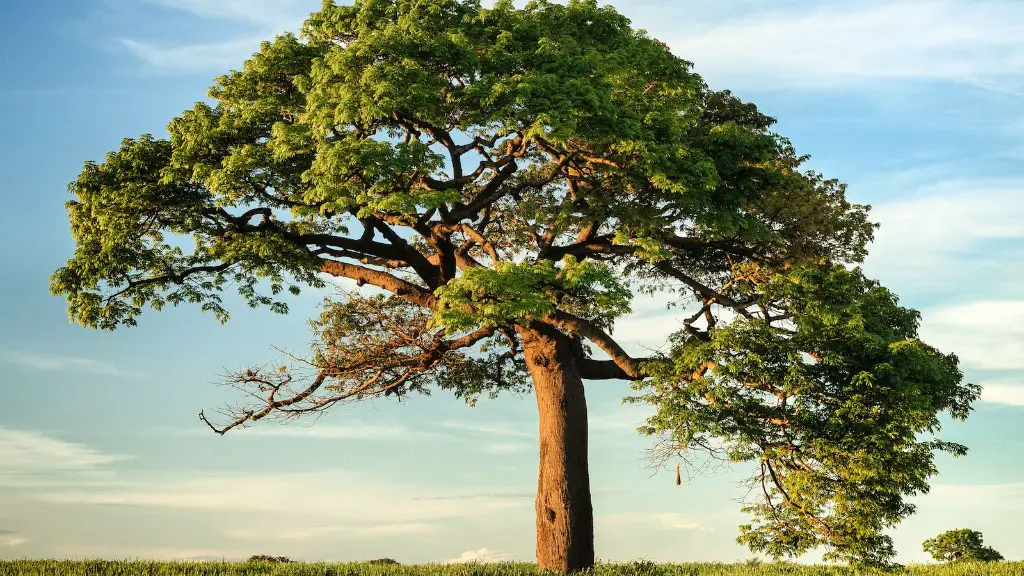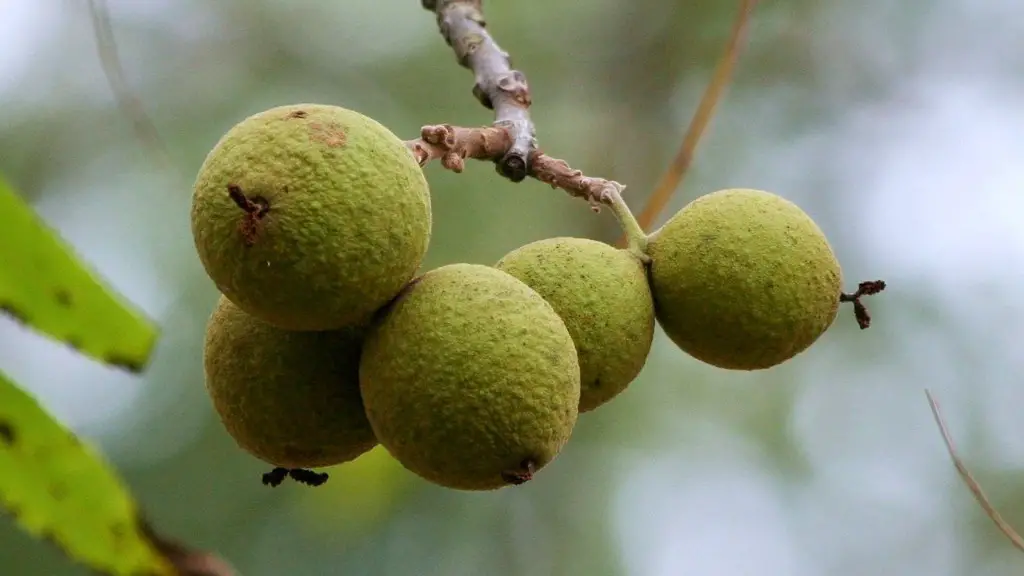Location and Soil Type
Avocado trees need an area that receives full sun, with well-drained soil. Moreover, if grown outside, the tree needs to be planted in a sheltered spot because they are somewhat sensitive to cold weather. Since it’s necessary for the soil to drain well, sandy or loamy soils are best for planting the tree. To ensure proper drainage, mulch can be applied to the soil to prevent water from sitting on top of it.
Watering
Watering is important for avocado trees, and it’s wise to keep the soil slightly moist at all times. During the summer months, however, a bit more water is necessary. Overwatering can be a key factor in the demise of the tree, so it’s important to pay attention to the moisture levels. If the soil gets to dry, irrigation should be employed.
Fertilizer
Avocado trees require occasional fertilizing to help them grow and thrive. To fertilize, use a balanced fertilizer with a higher nitrogen content, as this helps with leaf development in particular. Since fertilizer, particularly too much fertilizer, can be harmful, it’s best to start with a small amount and increase the dose as needed.
Pollination
Most avocado varieties are self-fertile, meaning that they do not need a second pollinator tree to produce fruit. However, some varieties, such as Bacon and Zutano, may require a separate partner tree to help with pollination. To avoid this issue, it’s a good idea to choose the right varieties and space the trees so that they are optimally positioned for cross-pollination.
Pruning
Pruning an avocado tree requires help from an experienced arborist, as it is a job best done by a professional. That said, it should be done occasionally, as it helps the tree stay healthy and well-shaped. To determine the best course of action, it’s important to contact an expert pruner who is familiar with avocado trees.
Protecting from Pests
Since avocado trees are susceptible to pests and disease, it is important to look out for signs of pest activity. Each part of the tree should be inspected regularly, as even a small infestation can quickly spread and become hard to control. Fortunately, there are many treatment options available, so it’s important to act quickly to minimize the damage.
Harvesting
A key factor to successful avocado tree growing is harvesting the fruit in a timely manner. Avocado trees usually do not bear fruit until they are 3-4 years old, and most avocado fruits are harvested when they are still green. To ensure their ripeness, the fruit should be left on the tree for as long as possible. Avocados typically ripen in late autumn or early winter, so it’s best to pick the fruit shortly before this time.
Growing from a Seed
Growing an avocado tree from a seed is possible, however, it is a difficult and time-consuming process. Planting an avocado pit in potting soil is often suggested when starting an avocado tree from a seed. After planting the pit, the top half of the seed should be exposed to water and the bottom half should remain dry. It can take up to 7 years for the tree to produce fruit if it is started from a seed.
Growing in Pots
Growers can start small avocado trees in pots filled with well-draining soil and then transplant the tree when it has grown large enough. The pot should have drainage holes and a potting mix that’s high in quality, and regularly fertilizing the tree with a mild fertilizer will better ensure a successful transplant.
Protecting from Cold
Avocado trees are fairly cold-hardy, but they can suffer damage in cold weather. If grown outside, the tree may need to be covered with a frost cloth during periods of cold temperatures. Utilizing a ripening chamber can also be helpful for keeping the tree safe during cold seasons.
Propagation
Propagation involves taking cuttings from a tree and growing them new seedlings. Propagating an avocado tree is quite labor-intensive, however, it ensures that the tree is true-to-type, and it produces some of the best tasting fruit. To start with, avocado seeds should be soaked in water and then cut in half, exposing the single embryo. After that, the seeds should be planted in a pot and covered with rooting hormone; finally, strainers can help the seedlings stay in the pot until the roots are firmly established and the seedling can be transplanted easily.
Transplanting the Tree
When an avocado tree has grown too large for its pot, it’s time to transplant. It’s important to choose the right area for planting; the tree should be planted in a sunny spot with well-drained soil. Additionally, it should be planted as deep as it was in the pot, making sure not to bury the root collar or trunk. To protect the tree from pests, the growing area can be mulched to prevent water run-off.
Protecting from Wind and Sunburn
Avocado trees are surprisingly sensitive to wind, especially when they are young. To prevent the wind from damaging the tree, it’s important to use staking and other protective measures to ensure its stability. In addition, avocado trees can get sunburned when exposed to harsh sunlight. For that reason, growers should ensure the tree is planted in a spot with sufficient shade, or employ tree wraps to protect the leaves from sunburn.
Insects and Diseases
The most common insect pests that attack avocado trees are aphids, mealybugs, and scale insects. To avoid these pests, make sure to inspect the leaves and branches of the tree regularly. There are many disease-resistant varieties of avocado, but common diseases include root rot, canker and anthracnose. If the tree does suffer from a particular disease, contact a specialist for advice.
Regular Maintenance
Regular care is an important part of growing an avocado tree. Regular fertilizing and watering are essential for a healthy tree, and prune it annually to ensure a good structure. Additionally, cleaning up any fallen leaves, fruits or branches after a storm can help prevent the spread of disease. Finally, pay attention to the condition of the leaves, watching out for signs of pests, fungus or stress.
Summers and Heat
Avocado trees can tolerate hot weather and thrive during the summer months. However, bear in mind that most varieties of avocado tree bear fruit in winter or early spring, so the tree may not flower during the summer. While warm temperatures are good for the tree, temperatures in the high 80s may lead to decreased yields. In addition, temperatures above 90 degrees can cause flowers to drop from the tree, leading to a lack of pollination and, subsequently, few fruits.
Frost Protection
Avocado trees are not cold-hardy and can suffer from frost damage, so it’s best to protect them from cold climates. If the tree must remain outdoors, use a frost cloth to cover the tree during an unexpected cold spell. It is also important to plant the tree in a sheltered spot, preferably where the temperature will stay between 35-60 degrees year round.
Conclusion
Growing an avocado tree can be a rewarding and enjoyable experience, but it is important to be aware of the tree’s needs in order to ensure successful growth. When planting and caring for an avocado tree, it’s important to choose the right location, soil, and fertilizers. Watering and pruning are essential tasks to stimulating healthy growth, as is protection from pests, frost, and heat. With the right care and maintenance, avocado trees can bear delicious fruit for many years to come.

